Tired of Strawberry Legs? Here’s How to Actually Get Smooth Skin
So, let’s talk about “strawberry legs.” If you’re reading this, you probably know exactly what I mean—those little dark dots or bumps on your legs that just won’t go away, no matter how much you scrub. As a long-time aesthetician, I can tell you this is one of the top concerns people bring to me. They feel self-conscious and are totally frustrated because nothing they try seems to work.
In this article
The good news? It’s completely manageable. The bad news is that there’s no single magic product that will fix it overnight. It’s all about building a smart, consistent routine that works with your skin, not against it. We’re going to skip the myths and harsh treatments and get right into what actually works for long-term smoothness.
First, What Are We Even Looking At?
“Strawberry legs” isn’t a real medical term; it’s just a catch-all for a few things that cause that dotted look. Figuring out the likely culprit is the first step. Honestly, it’s usually one of these three, or sometimes a fun little mix of them all.
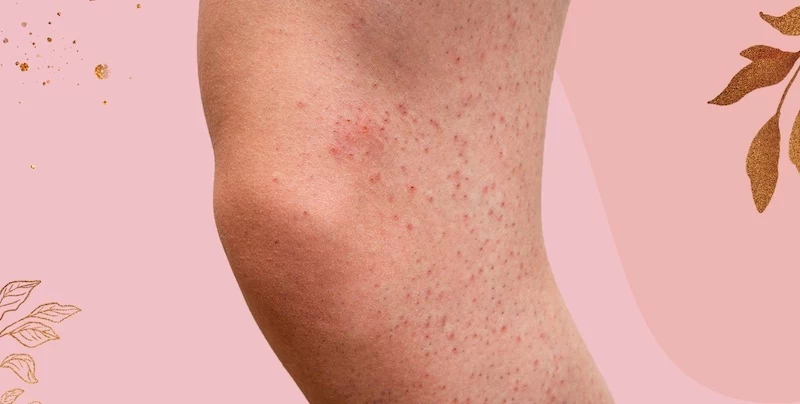
- Open Comedones: This is the most literal reason for the name. Think of these as blackheads, but on your legs. A hair follicle gets clogged up with a mix of your skin’s natural oil (sebum), dead skin cells, and other gunk. When this plug is exposed to air, it oxidizes and turns dark, looking like a tiny black dot. Super common, especially if you tend to have oilier skin.
- Keratosis Pilaris (KP): Does your skin feel like permanent goosebumps or sandpaper? That’s likely KP. It’s a genetic thing where your body produces too much keratin (a skin protein), which then forms hard plugs in your hair follicles. It loves to show up on the back of arms and thighs. The bumps are often skin-colored but can get red and inflamed, making the dotted look more obvious.
- Folliculitis: This is basically an inflamed or mildly infected hair follicle. It looks like small, red, pimple-like bumps, and it’s often caused by friction from tight clothes, sweat, or—the most common offender—shaving the wrong way. Folliculitis can make the other two conditions look a hundred times worse.
Most of the time, the best routines tackle all three issues to some extent, so don’t stress too much about getting a perfect self-diagnosis.
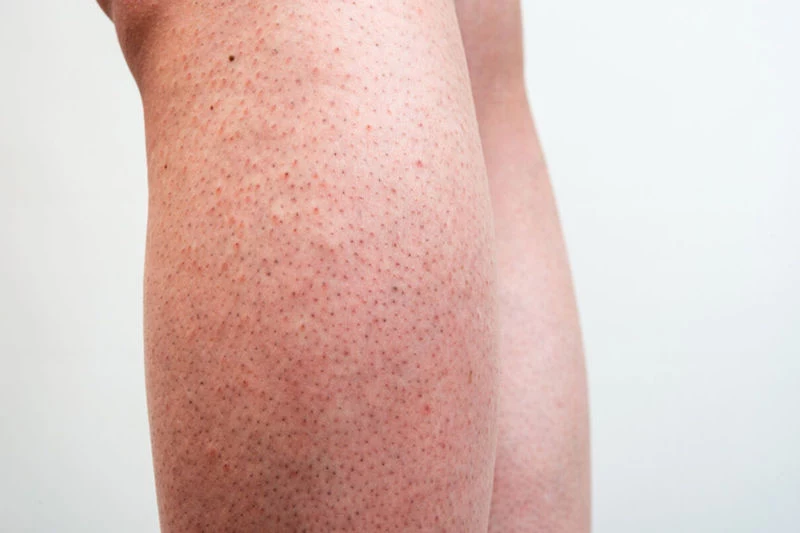
Why Scrubbing Harder Is Actually Hurting You
I get the impulse. You see a clogged pore, you want to scrub it into oblivion. But aggressive scrubbing is one of the worst things you can do. Your skin has a delicate protective barrier that keeps moisture in and bacteria out. When you go to town with a harsh scrub, you strip that barrier away.
Your skin’s response? Total panic. It pumps out even more oil to compensate for the dryness, and the irritation makes every pore look redder and more visible. You get stuck in a frustrating cycle. The secret isn’t to attack your skin; it’s to gently persuade it to behave.
The Game-Changing Daily Routine
What you do in and right after the shower is 80% of the battle. Get this right, and you’re most of the way there.
Step 1: Get Smart About Your Body Wash
That bar of soap you’re using? It’s probably too harsh and drying, which makes it harder for dead skin cells to shed naturally and leads to—you guessed it—more clogs.
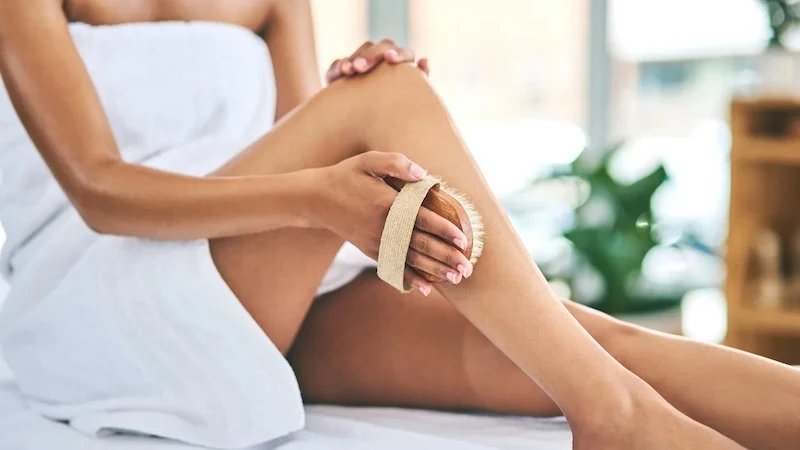
Instead, look for a body wash with a chemical exfoliant. These ingredients work on a microscopic level to dissolve the gunk in your pores. The two main players are:
- Salicylic Acid (BHA): This is your best friend for clogged pores (open comedones). Because it’s oil-soluble, it can get deep into the follicle to break up that plug of oil and skin cells. A great, affordable option you can find pretty much anywhere is the CeraVe SA Body Wash, which usually costs around $12-$15.
- Glycolic Acid (AHA): This is the hero for bumpy KP texture. It works on the skin’s surface to dissolve the excess keratin plugs causing that sandpaper feel.
Quick Tip: When you use these washes, don’t just lather up and rinse off immediately. Let it sit on your legs for a good minute or two to give the active ingredients time to do their job. And always use lukewarm water—hot water just causes more irritation.
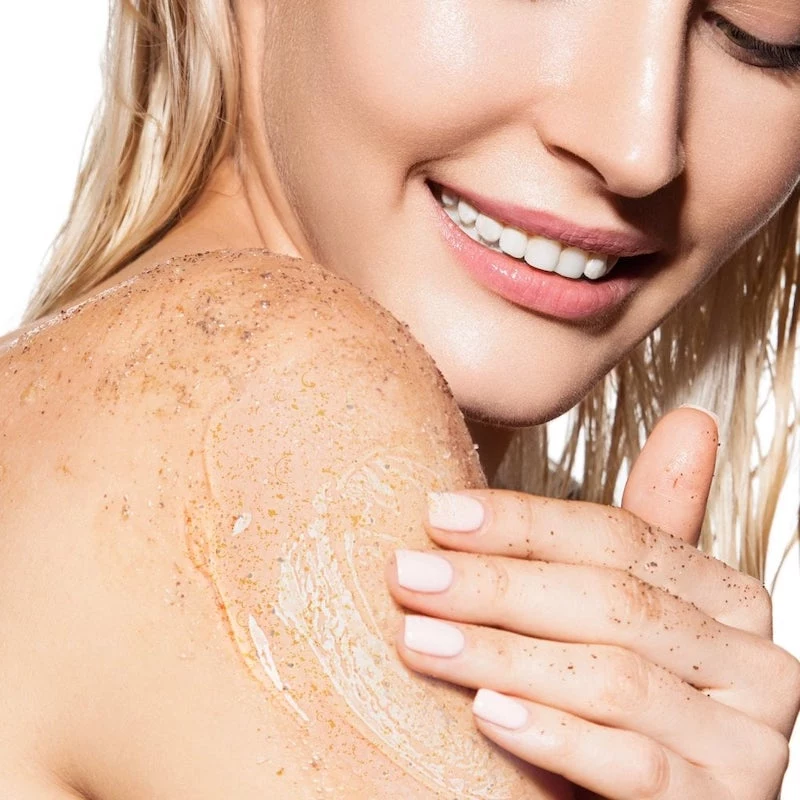
Oh, and a common question I get: “Can I use both?” Yes, but start slow! You could alternate days, or use a BHA wash in the shower and an AHA lotion afterward. Just listen to your skin.
Step 2: Moisturize Like You Mean It
So many people are afraid that lotion will clog their pores more. It’s actually the opposite. Hydrated skin functions better, sheds dead cells more efficiently, and has a stronger barrier, which means less irritation.
The real trick is to apply lotion within five minutes of getting out of the shower while your skin is still a bit damp. This traps that moisture against your skin for some serious hydration.
Look for lotions with these powerhouse ingredients:
- Urea & AHAs (Lactic/Glycolic Acid): These are incredible for KP. They both hydrate and gently exfoliate at the same time. Lotions like Amlactin Daily or Eucerin Roughness Relief are cult favorites for a reason and will set you back about $15-$25. They are absolute game-changers for smoothing out that bumpy texture.
- Ceramides: These are fats that help repair your skin’s barrier. If your skin is red and irritated, a ceramide cream is a must. Think brands like CeraVe or La Roche-Posay, which are fantastic and available at most drugstores.
I once had a client, a swimmer, whose legs were a mess from chlorine and constant shaving. The very first thing we did was stop all scrubbing and just have her slather on a thick ceramide cream twice a day. The redness was cut in half in two weeks. Only then did we slowly add in an acid treatment. It just goes to show: healing the barrier always comes first.
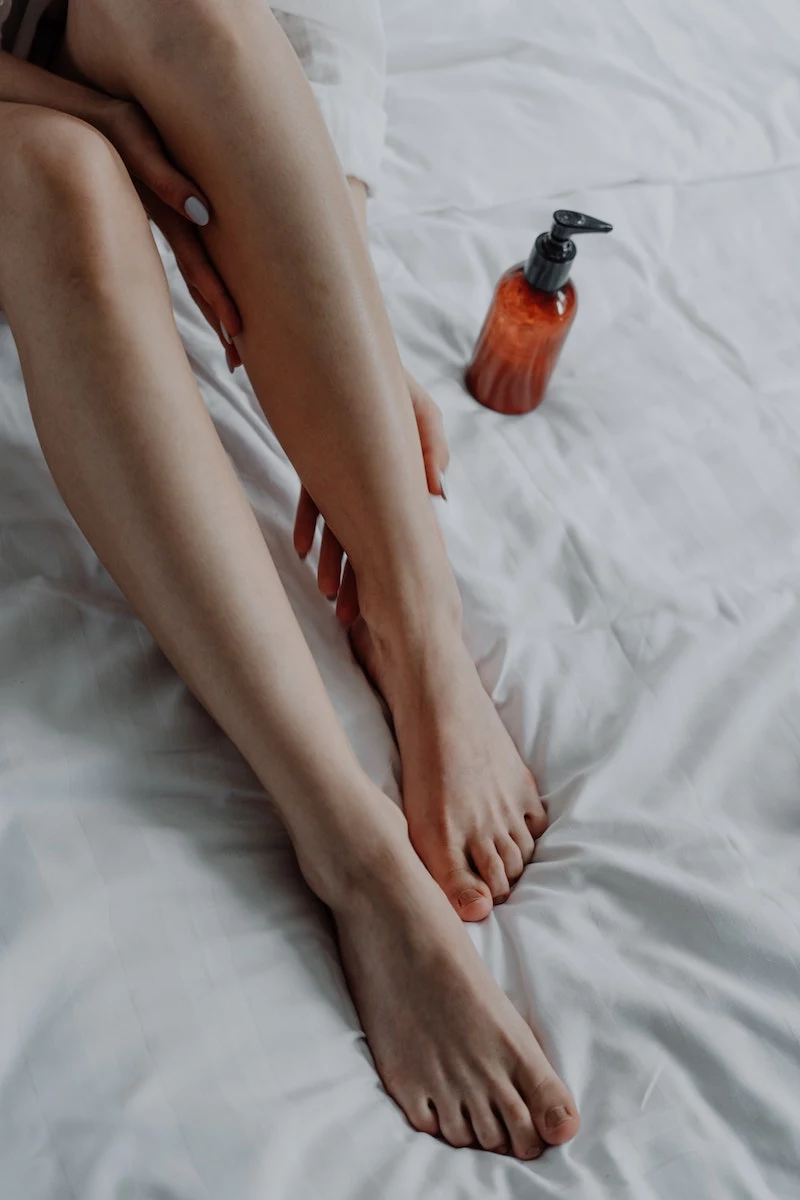
A Note on Exfoliation & Hair Removal
We’ve already covered chemical exfoliation, which should be the core of your routine. Physical scrubs should be a gentle, once-a-week treat, if that. If you must scrub, use something with fine, dissolvable particles, like a sugar scrub. Avoid anything with harsh, jagged bits like crushed nut shells.
Heads up! If you start an acid-based routine and notice some redness or tingling, don’t freak out. It’s totally normal at first. Just cut back to using the product 1-2 times a week and double down on your moisturizer. You can work your way up as your skin gets used to it.
How You Shave Matters. A Lot.
For so many, shaving is the direct cause of all that redness and irritation. It’s time to re-engineer your shave.
- The Razor: Ditch the five-blade monstrosities. More blades can mean more irritation as they drag across the skin. I often suggest a simple single or double-blade safety razor. A good starter one might be a $30 one-time purchase, but the blades are dirt cheap—you can get a pack of 100 for about $10!
- The Technique: Always shave at the end of a warm shower. Use a real shave gel (not airy foam) and shave with the direction of hair growth. I know, going against the grain feels closer, but it’s the #1 cause of razor burn and ingrowns. Use light pressure. Let the blade do the work.
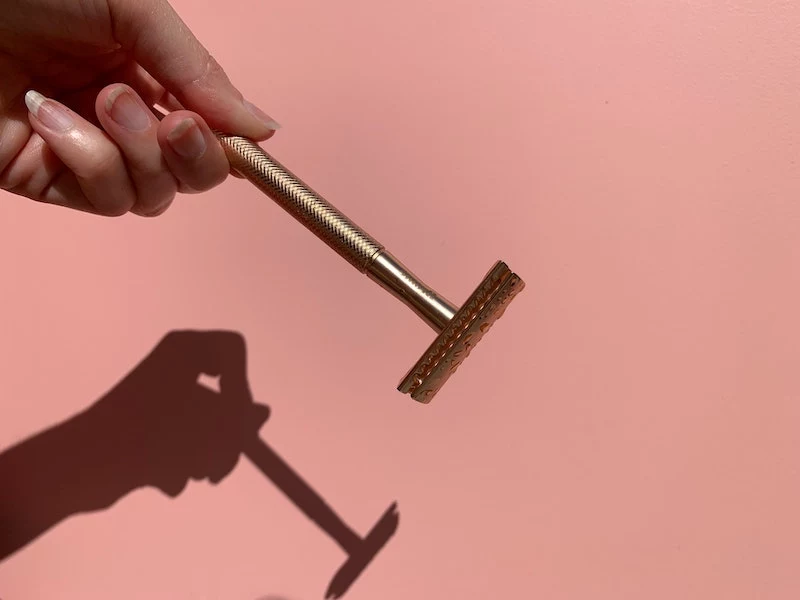
Thinking About Other Options?
If shaving still irritates your skin, it might be time to consider an alternative. Here’s a quick, no-nonsense breakdown:
Waxing or Sugaring: This yanks the hair out from the root. It lasts longer, and the hair grows back softer. But, it can still cause ingrown hairs if you don’t keep up with your chemical exfoliation between appointments. Cost-wise, you’re looking at around $40 to $80+ per session every 4-6 weeks.
Depilatory Creams: These dissolve hair at the surface. No razor, no irritation from blades. However, the chemicals themselves can be irritating. A word of warning from someone who has seen the aftermath: always do a patch test 24 hours before you slather this stuff all over your legs.
Laser Hair Removal or IPL: This is the long-term, high-impact solution. It damages the hair follicle so less hair grows back, and what does is finer. Fewer hairs mean fewer chances for clogs and irritation. It’s an investment, for sure. Expect to pay anywhere from $150 to $400 per session for your legs, and you’ll likely need 6-8 sessions. It sounds like a lot, but when you add up a lifetime of razors or waxing, it can be the most sensible choice.
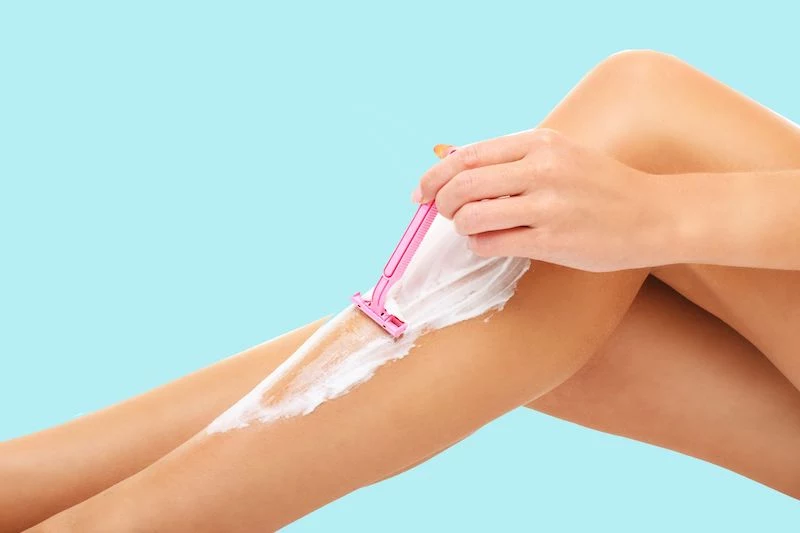
Your New Game Plan for Smooth Legs
Feeling overwhelmed? I get it. Let’s make it simple.
If you do ONE thing starting tonight, make it this: Apply your body lotion right after you shower, while your skin is still damp. That tiny change makes a huge difference.
When you’re ready for the full routine:
- Daily: In the shower, use a gentle cleanser. 3-4 times a week, swap in your chosen acid body wash (BHA or AHA), letting it sit for a minute. Post-shower, immediately apply your hydrating/exfoliating lotion to damp skin.
- On Shave Days: Shave at the end of your shower with a fresh blade, good shave gel, and light pressure. Moisturize right after.
- Weekly: If you want, use a gentle sugar scrub.
And that’s it. The key isn’t intensity; it’s consistency. You won’t see a miracle in a week, but after a month or two of this kind of gentle, consistent care, you are going to see a massive improvement. Be patient, be kind to your skin, and get ready for some serious smoothness.

Inspirational Gallery


Wondering which chemical exfoliant is right for your legs? It’s all about how they work.
Glycolic Acid (AHA): This acid is water-soluble, meaning it works on the surface of your skin. It’s a champion at dissolving the ‘glue’ that holds dead skin cells together, effectively smoothing out rough, sandpaper-like texture (hello, Keratosis Pilaris). Think of it as a surface polisher. A great, accessible option is The Ordinary’s Glycolic Acid 7% Toning Solution, used a few times a week (not right after shaving!).
Salicylic Acid (BHA): This one is oil-soluble. Its superpower is sinking deep into your pores to break down the mix of oil and dead skin that causes those dark dots (open comedones). If clogged pores are your main issue, this is your hero. Look for it in body washes, like the CeraVe SA Body Wash for Rough & Bumpy Skin, for gentle daily action.
More than 70% of people who shave experience some form of skin irritation, including folliculitis, which is a major contributor to the appearance of strawberry legs.
Your razor and technique matter more than you think. Ditch the dry shave or using bar soap immediately. A sharp, clean blade is non-negotiable—change it weekly if you shave often. Always use a hydrating shave cream or gel to create a protective barrier. Most importantly: shave in the direction of hair growth first. You can do a second, gentle pass against the grain if needed, but this simple change drastically reduces irritation and bumps.










